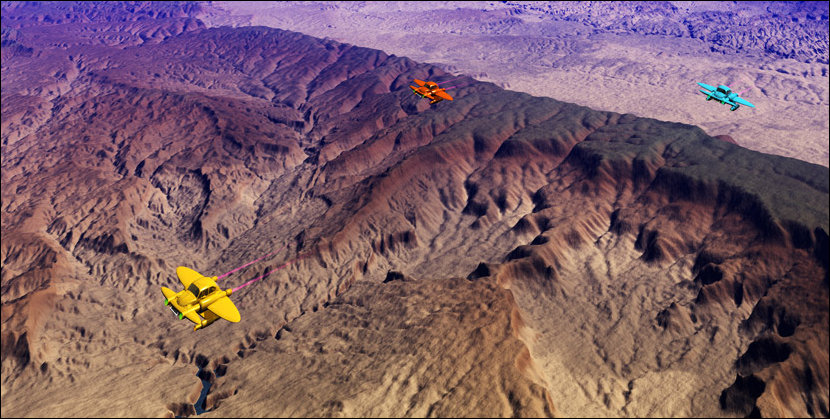Bryce Revisited


Around 1997 I noticed a bit of software which I simply had to have: a landscape generating program called Bryce, named after Bryce Canyon National Park, the hoodoo filled escarpment in Utah. The software’s mind-boggling ability to generate and edit fictional terrains was irresistible to me: I could create some pretty realistic stuff, once I got some experience. It was god-like—making whole planets, and moving and shaping entire mountain ranges with brush strokes.
Bryce’s tools allowed the creation of complex objects from primitive shapes and importing of 3D objects from other sources. I discovered that actual terrain data from the United States Geological Survey (USGS) could be manipulated too, creating depictions of actual landscapes. Bryce was many of my old childhood toys packed into the same box. For three or four years I romped around in this, as newer and more powerful versions of the program became available. I was limited only by the power of my own computer. A few early renders took days to complete; one of them took the proverbial forty days and forty nights!
My explorations in BryceLand took two directions. First, the creation of fictional landscapes, both familiar and alien. I populated them with little hybrid personal vehicles I had created which I called SpaceBugs. The second group of images imported actual geographical data blocks, stitched together and rendered to my liking. There was an occasional crossover, as when an artificial landscape looked particularly earth-like, or when I just could not resist flying a SpaceBug over the actual American southwest landscape.
The goal was to achieve a level of realism which always seemed just out of reach, but once in a while I came close. In 2016, looking through the scenes I had made, I decided to revisit Bryce and polish up the old work. I’d pretty much forgotten the working of the program over fifteen years, but as it came back to me, I began re-makes of the images. Because my computer was hundreds of times as powerful as before, I was even able to ramp up the atmospheric effects. I’m very happy with the results presented here.







